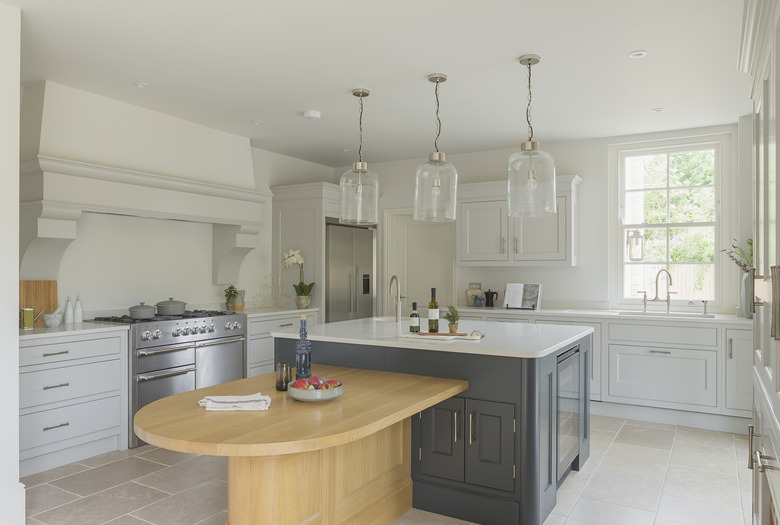What Is The Difference Between Travertine And Limestone Tiles?
We may receive a commission on purchases made from links.
Limestone and travertine are forms of limestone, which is a sedimentary rock composed of calcium carbonate fossils held together by dissolved minerals. It forms at the bottom of oceans and lakes. BuildDirect notes that when limestone is subjected to heat from the earth's crust, it becomes travertine. And when the water from geysers or mineral springs percolates up through limestone, it brings layers of dissolved minerals to the surface and deposits travertine on the earth's surface.
Tip
Travertine is a form of limestone, but travertine tile is more porous than limestone because of its pitting and pores. Because of travertine's porosity, any spills will leach into the tile, discoloring it.
Travertine Tile Characteristics and Uses
Travertine Tile Characteristics and Uses
Travertine tiles are usually beige, cream or tan, with a swirling pattern, and additional colors and vein patterns occur depending on the specific mineral makeup of the stone. Because the stone is porous, with holes and troughs in its surface, it is often filled with concrete before polishing or honing. You can also use a travertine tile sealer, called an impregnator, to protect the tile's surface.
Travertine tile is available in four primary finishes: polished (shiny), brushed (textured), honed (matte) and tumbled (textured). BuildDirect lists honed as the most popular travertine tile finish.
Unfilled travertine tile is also available and is most often used as an exterior surface. Travertine tiles most commonly come in large sizes for use as floor tiles. They are resistant to heat, scratching and staining.
Limestone Tile Characteristics and Uses
Limestone Tile Characteristics and Uses
Limestone tiles come in soft beige, cream, brown or tan, polished or natural, which MSI notes are available in more than 30 color tones. Limestone tile is appropriate for bathrooms, fireplaces, countertops and flooring. And since limestone tiles don't have the pitting of travertine tiles, they don't need to be filled. They are heat-resistant and easy to clean and often used outdoors because of their porosity.
Limestone and Travertine Tile Drawbacks
Limestone and Travertine Tile Drawbacks
Because travertine is a soft stone, it is a difficult choice for flooring and requires special maintenance such as poulticing, sealing and periodic re-sealing to keep it looking its best. Thus, it is most often used for building facades or cladding. It requires grinding to hone the surface, which sometimes reveals deeper holes in the rock, formed by gas bubbles.
Limestone, while rugged and durable, scratches and stains easily. BuildDirect notes that limestone tile is susceptible to liquid damage, particularly from acidic liquids, it may also be damaged by plain water. You'll need to seal limestone tile to protect it, and re-sealing it becomes a
Sources of Limestone and Travertine
Sources of Limestone and Travertine
Limestone is quarried in almost every state in the United States. Travertine, however, develops only where there are hot springs, such as Mammoth Hot Springs in Yellowstone National Park, and it can't be quarried there. Travertine also exists in Oklahoma and Texas.
Most of the travertine in the U.S. is from Italy, where it has been used as a building material for centuries. In the past decade, travertine has been increasingly imported from other countries, including Iran, Mexico, Turkey and Peru.
